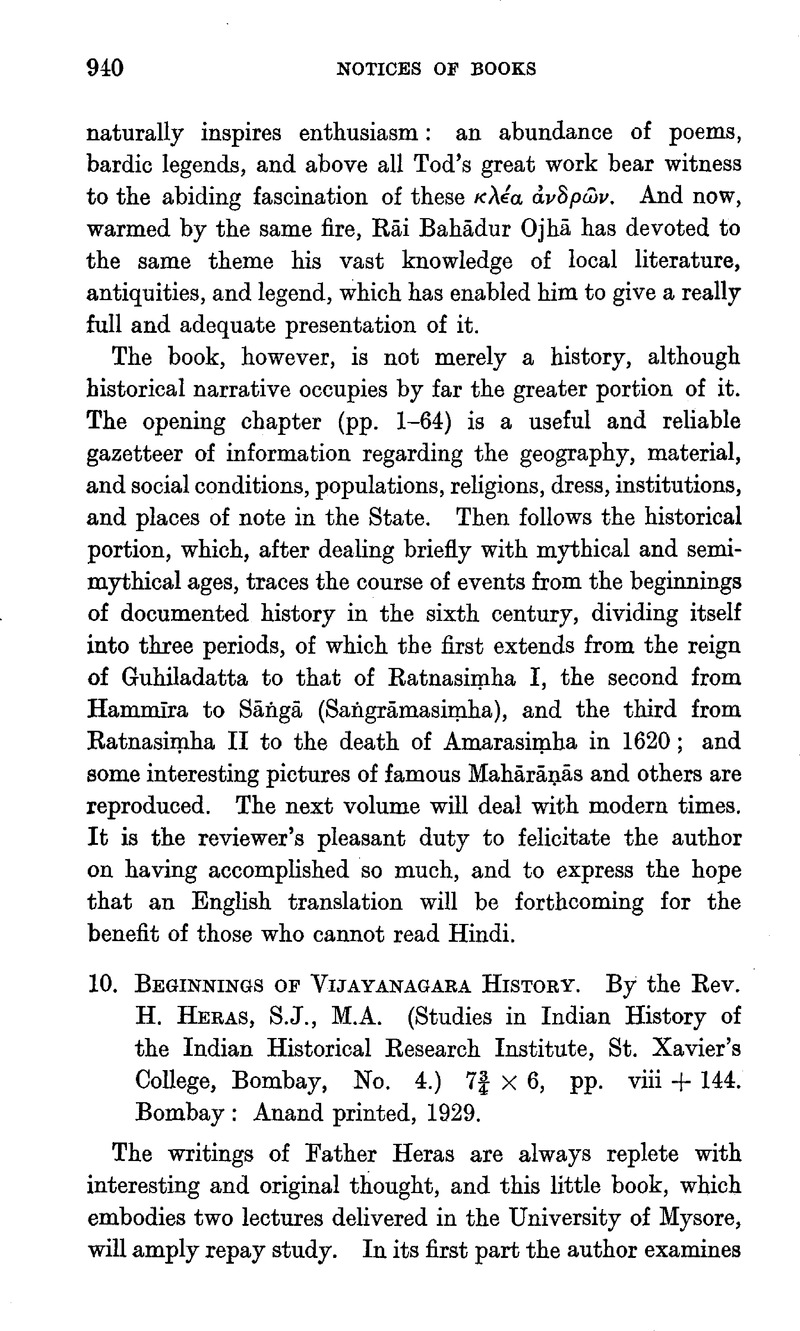No CrossRef data available.
Article contents
Indica - 10.Beginnings of Vijayanagara History. By the Rev. H. Heras S.J., M.A. (Studies in Indian History of the Indian Historical Research Institute, St. Xavier's College, Bombay, No. 4.) 7¾ × 6, pp. viii + 144. Bombay: Anand printed, 1929.
Published online by Cambridge University Press: 15 March 2011
Abstract

- Type
- Notices of Books
- Information
- Copyright
- Copyright © The Royal Asiatic Society 1930
References
1 On the other hand there are some reasons for holding the opposite view, on which the reader may profitably consult Mr. Venkataramanayya's Kampili and Vijayanagar.
2 Another point—of no importance, it is true—arises from the name of the first four kings given by Nuniz, viz. Deorão, Bucarāo, Pureoyre Deorão, and Ajaräo, whom Father Heras would equate respectively with an unknown king, Harihara I, Bukka I, and Harihara II. It seems to me that this is impossible, and that Nuniz simply blundered; his “Deorão” (i.e. Dēvarāya) is Harihara II, his “Pureoyre Deorão” (scil. Piriya Dēvarāya) is Harihara I, his “Bucarão” is of course Bukka I, and why he called Bukka II “Ajarão” is a mystery. If, as I suppose, he inverted the order of the two Hariharas, we can understand his statement that “Pureoyre Deorão” first struck coins in Vijayanagara.




